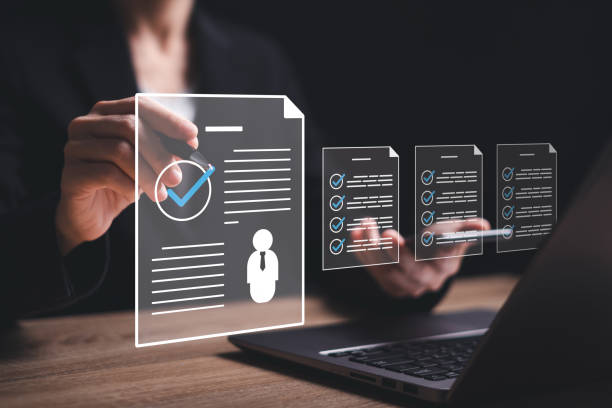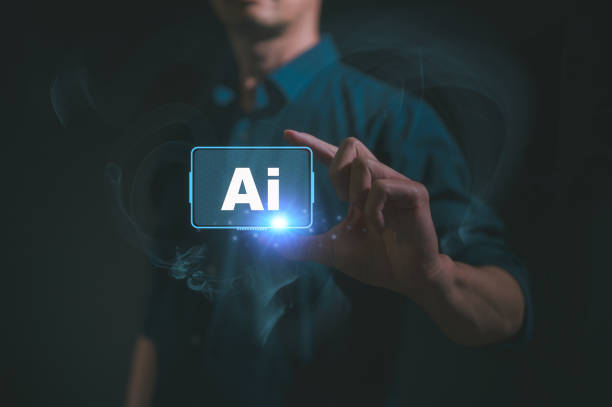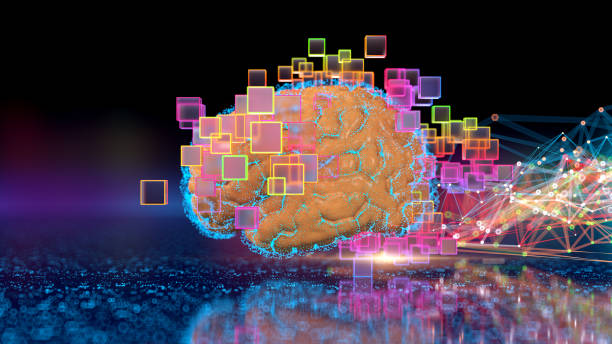Introduction to On-Page SEO and Its Critical Importance
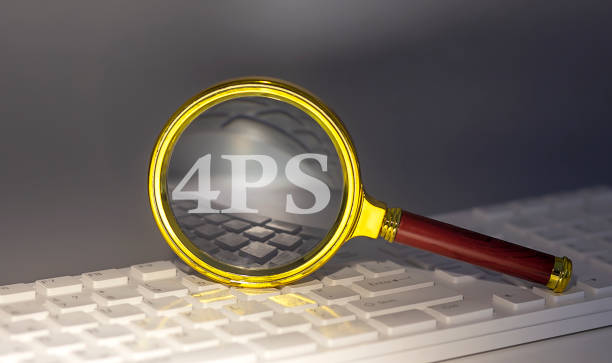
On-Page SEO, also known as internal SEO, is a set of actions and techniques performed directly on your website pages to improve search engine understanding of your content and, consequently, increase your ranking in search results.
This includes optimizing elements such as page titles, meta descriptions, heading structure, content, and images.
Simply put, On-Page SEO tells search engines what your page is about and how relevant and authoritative it is for a specific keyword.
In today’s competitive world, where millions of websites compete for user attention, having a strong On-Page SEO strategy is not just an advantage, but a necessity.
This educational topic will help you understand the fundamental principles of optimizing your site.
Did you know that without a strong foundation in On-Page SEO, even the best Off-Page SEO strategies cannot be fully effective? This is thought-provoking content that guides you to the importance of this topic.
By accurately understanding these concepts, you can ensure that your website is not only seen but also properly indexed and ranked by search engines.
On-Page SEO involves optimizing a website to increase its ranking and organic traffic.
This process includes several important factors that help search engines understand your content.
#Optimization #Website #SearchEngine.
Research shows that 80% of customers trust companies with professional websites more. Does your current site inspire this trust?
With RasaWeb’s corporate website design services, solve the problem of customer distrust and a poor online image forever!
✅ Create a professional image and increase customer trust
✅ Attract more sales leads and grow your business
⚡ Get free consultation
Keyword Research for Effective On-Page SEO

Keyword research is the backbone of any successful On-Page SEO strategy.
Choosing the right keywords ensures that you produce content that users are truly looking for.
This process goes beyond finding high-volume search terms; you must pay attention to the User Intent behind each search.
Is the user looking for information (informational intent), intending to buy (commercial intent), or searching for a specific website (navigational intent)? Answering these questions determines the type of content you should create and the keywords you should target.
Tools like Google Keyword Planner, Ahrefs, SEMrush, and KWFinder can assist you in this process.
Using long-tail keywords, which consist of three or more words, often yields higher conversion rates and faces less competition.
This is a specialized part of On-Page SEO that requires precision and analysis.
Did you know that overlooking relevant keywords with low search volume can cost you significant opportunities? This is thought-provoking content that highlights the importance of comprehensive keyword research.
The goal is to identify keywords that are not only relevant but also ones your actual users will use to find your content.
This process requires deep exploration into the search behavior of your target audience and is considered the cornerstone of any successful On-Page SEO campaign.
A precise understanding of keywords allows you to create accurate and targeted content that effectively addresses user needs.
Optimizing On-Page Elements and URL Structure
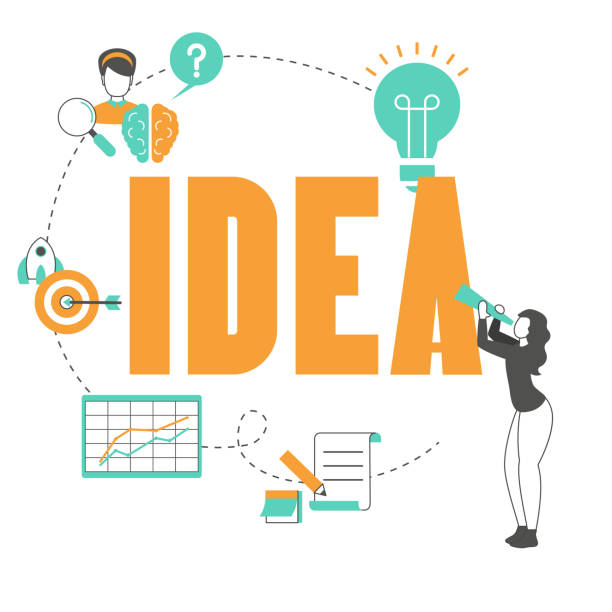
On-Page SEO directly deals with the elements present on each page of your website.
Optimizing these elements sends a clear message to search engines, helping them understand the main topic and relevance of your content.
These elements include:
1.
Title Tag: The most important On-Page element, displayed at the top of the browser and in search results.
It should contain the main keyword, be engaging, and be less than 60 characters.
2.
Meta Description: An engaging summary of the page’s content that appears below the title in search results.
Although it doesn’t directly affect ranking, it plays a vital role in click-through rate (CTR).
It should include keywords and a Call to Action (around 150-160 characters).
3.
Heading Structure (H1-H6): Headings not only improve content readability for users but also indicate the structure and hierarchy of information to search engines.
Each page should have only one H1, which includes the main keyword, and H2 to H6 should be used for subheadings and content organization.
4.
URL Address: URLs should be short, readable, and include the main keyword.
Avoid extra characters, meaningless numbers, and complex parameters.
A descriptive URL helps users and search engines anticipate the page’s content.
This is a comprehensive explanation of the key elements for success in On-Page SEO.
Ensuring that each of these elements is properly optimized can make a significant difference in your website’s performance.
This section is a practical guide for correctly implementing On-Page SEO.
Table 1: On-Page SEO Elements Checklist
![]()
| Element | Description and Optimization Tips |
|---|---|
| Title Tag | Must include the main keyword, be short and engaging (around 60 characters). |
| Meta Description | An engaging summary of the content, including keywords, encouraging user clicks (around 150-160 characters). |
| Heading Structure (H1-H6) | H1 for the main page title, others for subheadings. Includes relevant keywords to improve readability and structure. |
| URL Address | Short, readable, contains main keywords, and no extra characters. |
| Image Alt Text | Includes keywords to explain the image to search engines and visually impaired users. |
Are you tired of your e-commerce site having visitors but no sales? RasaWeb solves your main problem with professional e-commerce website design!
✅ Significant sales increase with targeted design
✅ Seamless user experience for your customers
⚡ Get free consultation!
Creating Valuable Content and Optimizing It
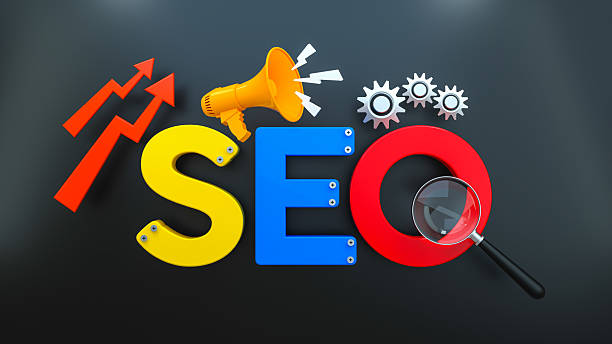
Content is king in SEO, and this principle holds true more than anywhere else in On-Page SEO.
Producing valuable, comprehensive, and user-friendly content is of paramount importance.
Valuable content refers to text that answers user questions, provides accurate information, and assists them in achieving their goals.
Your content should be readable; meaning, use short paragraphs, clear sentences, lists, and images to break up the text.
Furthermore, the natural use of main keywords and their synonyms (LSI keywords) throughout the text, without leading to artificial keyword density, is crucial.
The goal is not to force keywords into the text, but rather to produce content that naturally revolves around those keywords and related topics.
This is a specialized approach that shows search engines you have deeply addressed the topic.
Strong On-Page SEO begins with strong content.
Your content should be continuously updated to maintain its freshness and relevance.
Did you know that old and low-quality content can harm your ranking? This is thought-provoking content that directs you to the importance of content freshness.
Providing explanatory and comprehensive content helps search engines identify your website as an authoritative source in its field, which significantly contributes to improving your ranking.
This approach literally increases your organic traffic and attracts users to your website.
Image Optimization for On-Page SEO
![]()
Images play a significant role in your website’s visual appeal and also in On-Page SEO.
However, if not properly optimized, they can severely reduce your site’s loading speed, which harms user experience and SEO ranking.
For image optimization, there are several key tips:
1.
File Name: Use descriptive names that include keywords (with hyphens between words).
For example, instead of `IMG_1234.jpg`, use `on-page-seo-site.jpg`.
2.
Alt Text: Alt Text is a brief description of the image content, essential for both search engines (which cannot “see” images) and users with visual impairments.
Be sure to naturally include the main keyword or related keywords in your Alt Text.
3.
Compression and Size: Compress images before uploading them to reduce their size without significant quality loss.
Use optimized image formats like WebP and adjust image dimensions to suit the page’s needs.
4.
Responsive Images: Ensure your images display correctly and load optimally on various devices (mobile, tablet, desktop).
These educational tips help you use your images as an asset in your On-Page SEO strategy, not a hindrance.
Image optimization is a crucial step in improving overall website performance and user experience, and it serves as a practical guide for optimal use of visual content.
Powerful Internal Linking Strategy
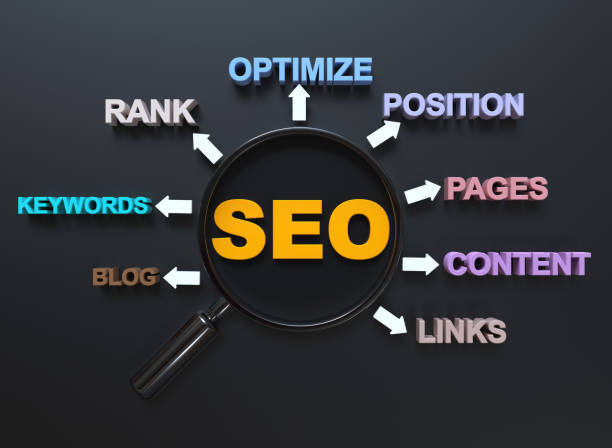
Internal Linking is one of the most powerful On-Page SEO tools that helps search engines understand your website’s structure, recognize the importance of different pages, and easily crawl your site.
This process involves creating links from one page on your website to another page on the same website.
The reasons for its importance include:
1.
Improved Crawlability: Internal links help search engines discover and index all pages on your site.
2.
Distribution of Ranking Power: Internal links help transfer “Link Juice” or ranking power from stronger pages to weaker ones.
3.
Improved User Experience (UX): Relevant internal links keep users on your site, reduce bounce rate, and increase dwell time.
This signals to search engines that your content is valuable.
4.
Use of Anchor Text: Use descriptive anchor texts that include keywords (relevant to the destination page) to tell search engines what the destination page is about.
A smart internal linking strategy is like creating a neural network within your website that connects each section to other relevant sections.
This is a specialized approach that helps search engines better understand your website’s structure and hierarchy.
Design a guideline roadmap for site structure and link flow.
This type of On-Page SEO also helps increase the authority of your pages, leading to better rankings in SERPs.
Technical Aspects of On-Page SEO
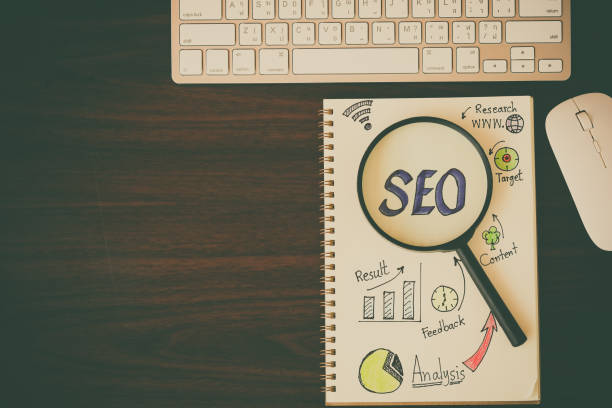
On-Page SEO is not limited to content and keywords; technical aspects also play a vital role in your website’s crawlability, indexability, and ranking by search engines.
Ignoring these factors can render your content SEO efforts ineffective.
Some of the most important technical aspects include:
1.
Site Loading Speed: One of the most important ranking factors and user experience elements.
Use tools like Google PageSpeed Insights to identify and resolve speed issues.
2.
Mobile-Friendliness: Given Google’s Mobile-First Indexing strategy, your site must be fully responsive and display correctly on all devices.
3.
Use of Schema Markup: Semantic coding that helps search engines better understand your content and display it as Rich Snippets in search results.
This can increase your click-through rate.
4.
XML Sitemap: An XML file that provides a list of all important pages on your site to search engines, helping them discover and index your content.
5.
Robots.txt File: This file tells search engines which parts of your site they should crawl and which parts to ignore.
Improper use can harm SEO.
These analytical factors require careful review and form an important part of the On-Page SEO strategy.
Proper management of these technical aspects is the foundation of strong and sustainable SEO.
A comprehensive explanation was provided in this section so you can also technically optimize your site.
Are you worried about losing customers because you don’t have a professional e-commerce site?
With e-commerce website design by RasaWeb, forget these worries!
✅ Significant increase in sales and visitor-to-customer conversion rate
✅ Professional and user-friendly design that builds customer trust
⚡ Get free consultation from RasaWeb
Table 2: Important Technical Factors in On-Page SEO

| Technical Factor | Importance for On-Page SEO and Tips |
|---|---|
| Site Loading Speed | Important ranking factor and user experience. Use tools like Google PageSpeed Insights. |
| Mobile-Friendliness | High importance in Mobile-First Indexing. Ensure correct site display on various devices. |
| Use of Schema Markup | Helps search engines better understand content and display Rich Snippets. |
| XML Sitemap | Guides search engines to find and index all important site pages. |
| Robots.txt File | Controls crawler access to different parts of the site. Avoid blocking important content. |
User Experience (UX) and Its Impact on On-Page SEO

User Experience (UX) and On-Page SEO are two sides of the same coin.
While SEO helps attract traffic, UX ensures that users have a positive experience and achieve their goals after landing on your site.
Search engines, especially Google, heavily rely on UX signals for page ranking.
Factors such as:
1.
Bounce Rate: If users immediately leave your page after landing, it signals that your content was not relevant or sufficient.
2.
Dwell Time: The duration a user stays on your page indicates the quality and attractiveness of the content.
3.
Click-Through Rate (CTR): The number of clicks your page receives in search results.
A high CTR indicates an engaging title and meta description.
4.
Mobile Compatibility: Responsive design and fast loading on mobile are essential for excellent UX.
A website with an attractive visual design, easy navigation, organized content, and fast loading speed provides a positive user experience.
This positive experience leads to positive signals for search engines, consequently improving your ranking.
An analysis of these aspects shows that improving UX indirectly but powerfully affects your On-Page SEO.
User experience is a key factor in online success.
Are you ready to optimize your website for users? This is thought-provoking content that demonstrates the importance of synchronizing UX and SEO.
Frequently Asked Questions
| Row | Question | Answer |
|---|---|---|
| 1 | What is On-Page SEO (Internal SEO)? | On-Page SEO refers to a set of actions performed within the website (on its pages) to improve its ranking in search engine results. This includes optimizing content, site structure, and HTML codes. |
| 2 | Why is On-Page SEO important? | On-Page SEO helps search engines better understand the page content and determine whether that page is relevant and valuable for user searches. This better understanding leads to higher rankings. |
| 3 | What is the first and most important step in On-Page SEO? | Keyword Research is the most important initial step. By finding appropriate keywords, targeted content relevant to user needs can be produced. |
| 4 | What is the role of the Title Tag in On-Page SEO? | The Title Tag is one of the most important ranking factors and should include the main keyword. This tag is displayed as the page title in search results and influences the Click-Through Rate (CTR). |
| 5 | What is the importance of Meta Description? | Meta Description does not directly affect ranking, but by providing an attractive summary of the page content in search results, it can entice users to click, thereby increasing the Click-Through Rate (CTR). |
| 6 | Why is using Headings (H1, H2, etc.) in content important? | Headings help structure the content and improve readability for users and search engine crawlers. Using keywords in headings also helps search engines better understand the topic. |
| 7 | What does Image Optimization in On-Page SEO include? | It includes compressing images to reduce size, using descriptive and relevant file names, and filling the Alt tag (alternative text) with relevant keywords to help search engines understand the image content. |
| 8 | What does Internal Linking in On-Page SEO mean? | Internal linking refers to creating links between different pages of a website. This helps distribute Link Equity, improve user experience, and assist search engine crawlers in discovering new pages. |
| 9 | Why is Page Speed important for On-Page SEO? | Page loading speed is a direct ranking factor and significantly affects user experience. Slow pages can lead to an increased Bounce Rate and reduced user engagement. |
| 10 | What role does quality content play in On-Page SEO? | High-quality, comprehensive, unique, and valuable content for the user, is the core of On-Page SEO. This content not only attracts and retains users but also sends positive signals to search engines, helping achieve better rankings. |
And other services of RasaWeb Advertising Agency in the field of advertising
Smart Custom Software: A combination of creativity and technology for campaign management through attractive user interface design.
Smart Advertorials: A fast and efficient solution for increasing website traffic with a focus on dedicated programming.
Smart Brand Identity: A creative platform for improving click-through rates with attractive user interface design.
Smart Customer Journey Map: An effective tool for improving SEO rankings with the help of SEO-driven content strategy.
Smart Advertorials: An effective tool for increasing sales with the help of intelligent data analysis.
And over hundreds of other services in the field of internet advertising, advertising consultation, and organizational solutions
Internet Advertising | Advertising Strategy | Advertorials
Resources
Comprehensive SEO Training on AparatSEO Articles on ZoomitOn-Page SEO Guide from SEO GamaOn-Page SEO Tutorial on Iran Server
? For your business to leap forward in the digital world, count on the expertise of “RasaWeb Afarin”! By providing comprehensive digital marketing services, including multilingual website design, we help you establish a powerful and impactful online presence.
📍 Tehran, Mirdamad Street, next to Bank Markazi, Southern Kazeroon Alley, Ramin Alley, No. 6

